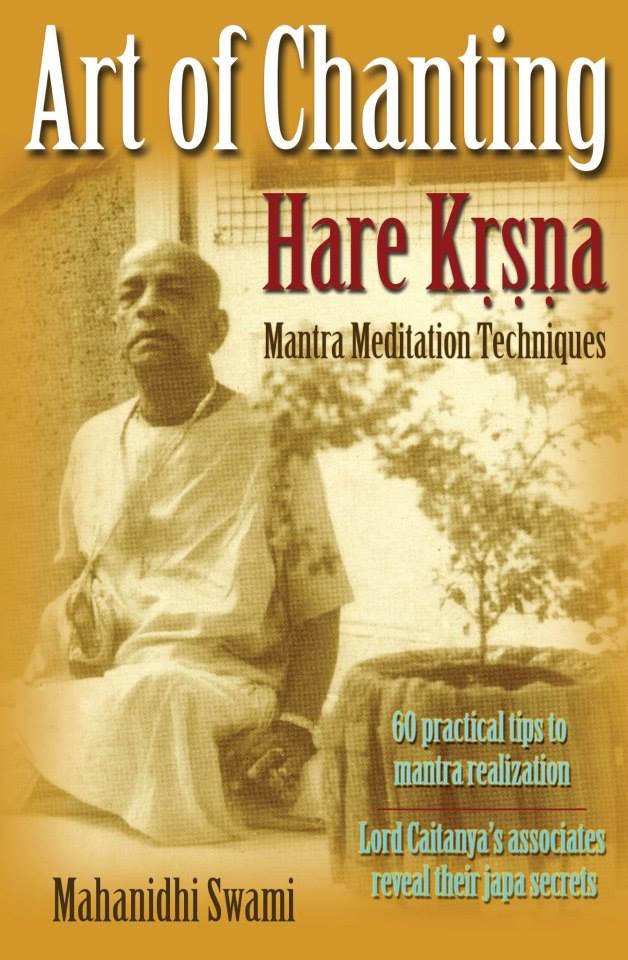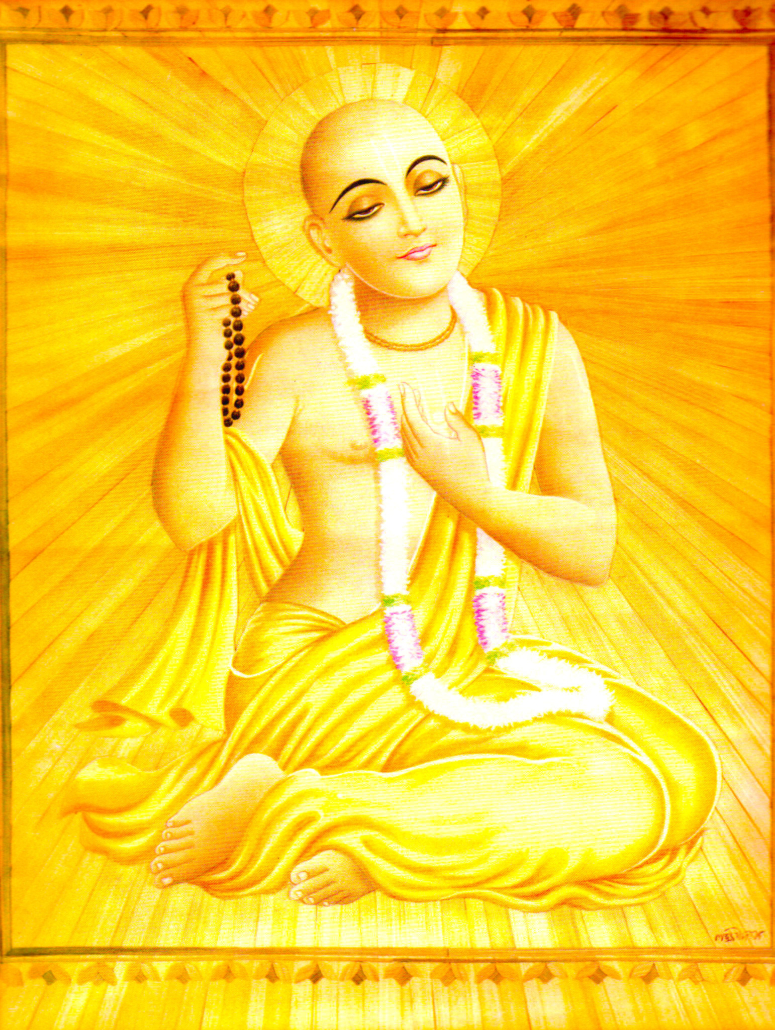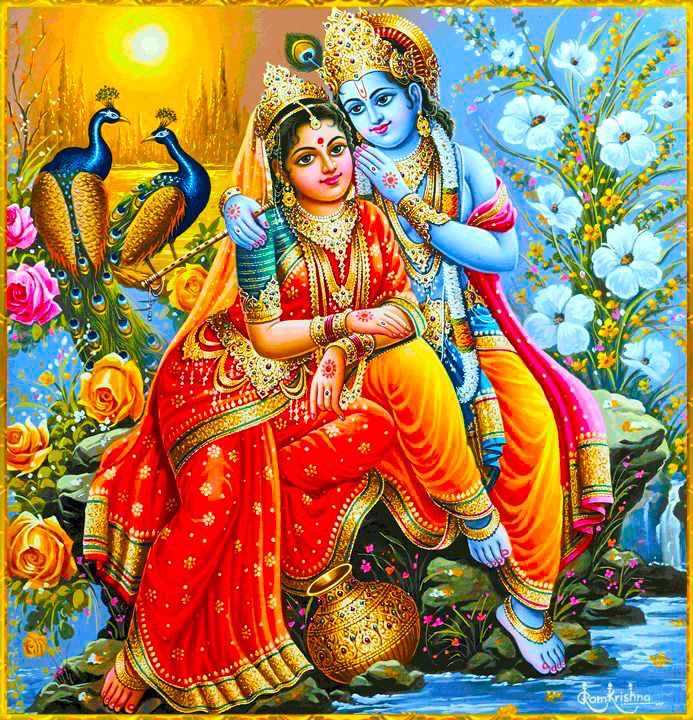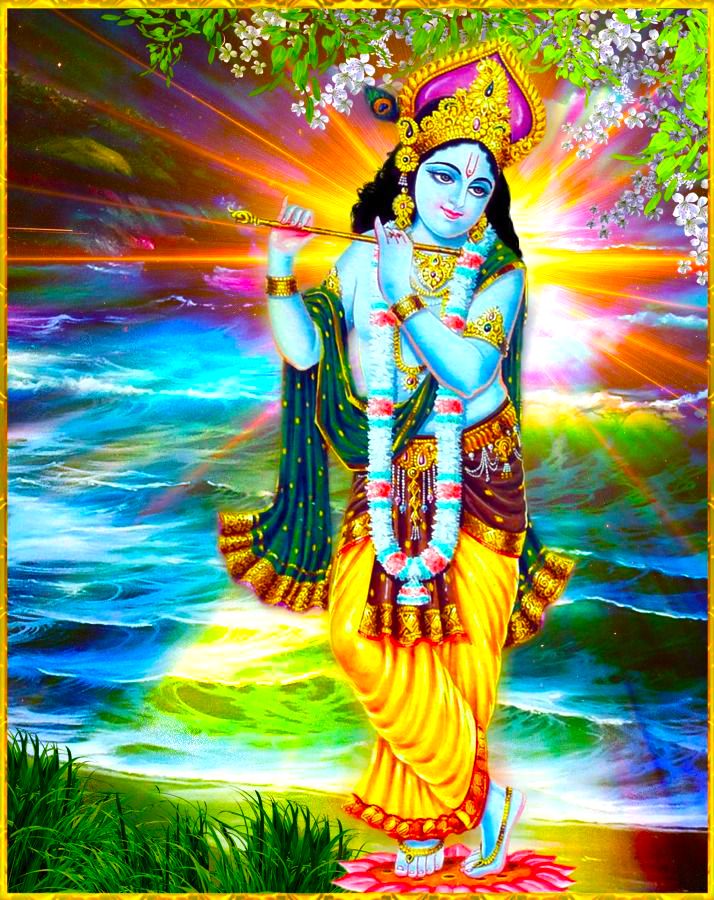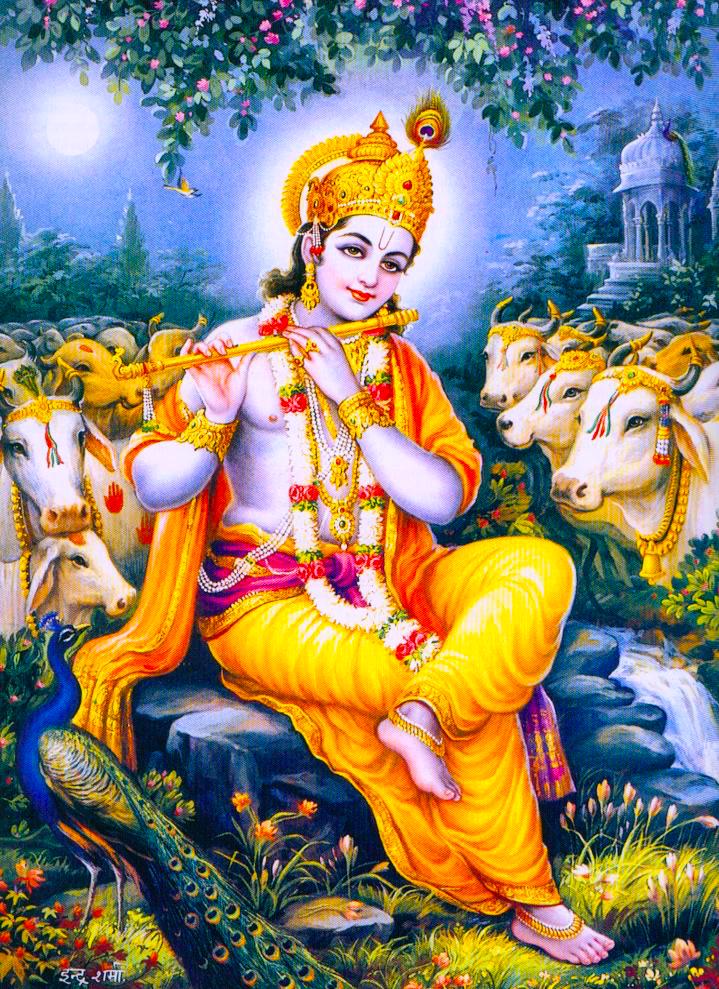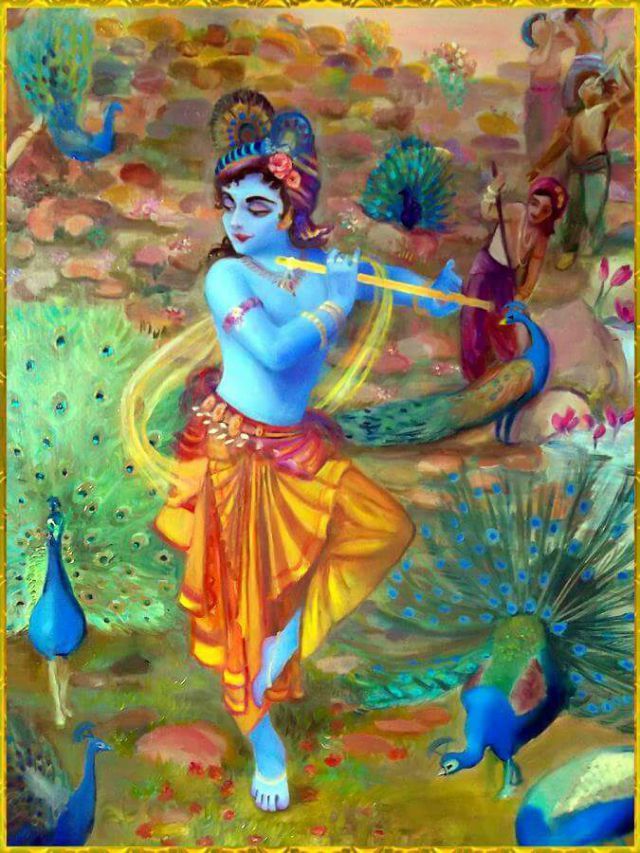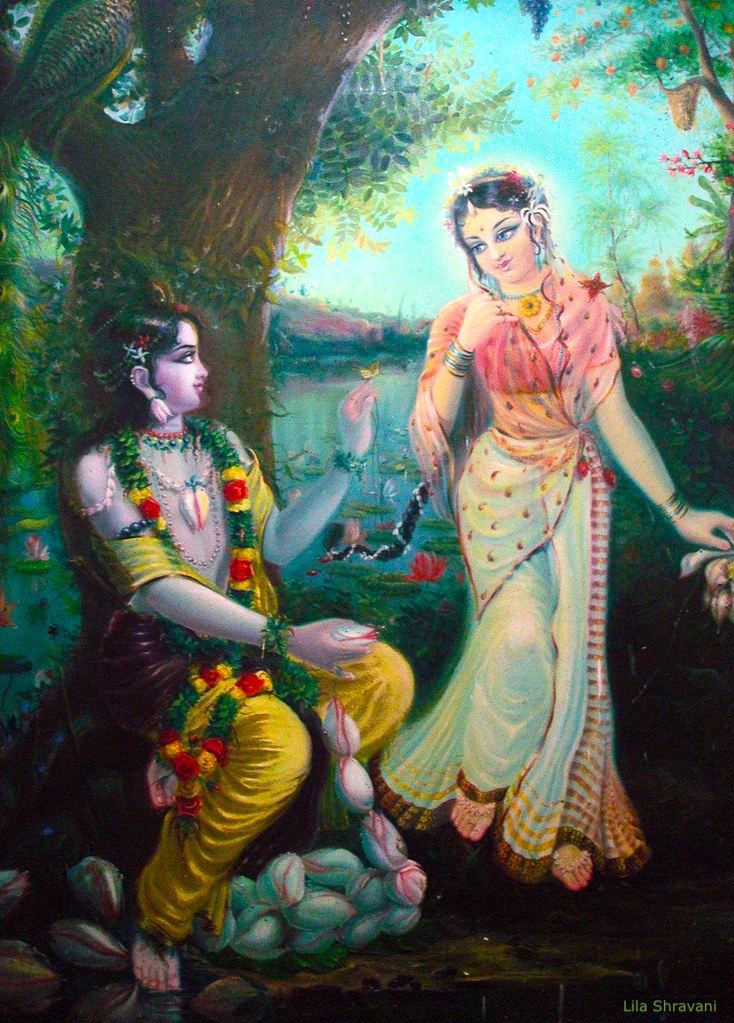Mahanidhi Swami
Devotees often say, “There are no hard and fast rules in chanting Hare Krishna.” Thus anything goes in the name of nama-japa: chanting on tulsi beads a fixed number of rounds of the maha-mantra, Hare Krishna Hare Krishna, Krishna Krishna Hare Hare—Hare Rama Hare Rama Rama Rama Hare Hare.
Since there are no restrictions, many devotees think it’s okay to chant japa while surfing the I-net, driving a car, listening to a lecture, lying in bed, shopping, watching a video etc. etc.
To prove their no rules argument, such devotees cite Sri Caitanya Mahaprabhu’s Siksastakam verse 2:
Niyamitah smarane na kalah, “there are no restrictions regarding REMEMBERING the holy name of Bhagavan Sri Krishna.” Lord Gauranga only says here that there are no rules about remembering (smarane). Gauranga does not say there are no rules in nama-japa.
Mahaprabhu comments on this verse saying: khaaite shuite yathaa tathaa nama laya, kaala-desha-niyama naahi, sarva siddhi haya, “There is no regulation (niyama) regarding taking the name (nama laya), even while eating or lying down; it will grant all perfection (sarva siddhi).” (Cc. 3.20.18)
Misusing Mahaprabhu’s comment, many devotees conclude, “Just see Lord Caitanya said it’s okay to chant nama-japa while lying in bed, eating prasada, or doing anything…”
Sorry, this argument is completely wrong. Mahaprabhu is simply reiterating the all perfect power and efficacy of the Divine Name. Sri Chaitanyadeva is not encouraging one to chant japa while lying in bed or eating maha-prasada.
In His comment above and in the entire Siksastakam, Lord Gauranga is glorifying the unlimited power, mercy and benefit of Sri Hari Nama-SANKIRTANA (param vijayate sri krishna sankirtanam!).
In these two verses, Sri Caitanya Deva is not describing nama-japa, He is talking about the congregational chanting Sri Krishna’s sweet Holy Names.
Sri Caitanya Mahaprabhu is saying you can remember or take Sri Krishna’s name anywhere, anytime in any circumstance. Of course, we should always remember Sri Krishna, and never forget Sri Krishna for even half a moment (lava nimesha).
And to do this we must always remember Sri Nama Prabhu, sing His holy names with every breath, and chant “Hari! Hari!” between every bite of food. Yes, basically there are no rules regarding kirtana or sankirtana.
BUT THERE ARE RULES IN CHANTING NAMA-JAPA
If we ignore these rules and chant japa incorrectly, then offenses will arise, and we will never attain our cherished goal of pure love for Radha-Govinda.
The mantra shastras, Bhakti-rasamrta-sindhu, and the Gaudiya Vaisnava lawbook, Hari-bhakti vilasa no. 17 state many rules regarding chanting Hari-nama japa, the Gopala-mantra and other diksha mantras.
One should try his best to follow the rules below to quickly achieve success in chanting Hare Krishna nama-japa:
SIX GENERAL RULES FOR NAMA-JAPA:
- Avoid the ten offenses to Sri Nama Prabhu.
- Daily chant the same fixed number of malas. (ganitrikaam grhita ca mantram HBV 17.71, 191) “After vowing to chant a certain number of rounds daily (16, 32, 64) one must chant every day without fail, and not chant less than that.” (HBV 17.191)
- Chant on 108 tulasi beads mala.
- Beads should be ROUND in shape. The mala should be arranged in order from the biggest bead to the smallest. (HBV 17.89)
- One should not chant with unclean hands, or in an impure state e.g. without bathing, dirty cloth or in bed. (17.132, 137)
- One must not chant japa while talking, lying down, walking or yawning.
RULES FOR MAXIMUM JAPA BENEFIT: (HBV 17.121)
- Concentrate on Nama by withdrawing your mind from ALL other attractions (distractions).
- Cleanliness of mind, body, cloth, asana and chanting place.
- Chant Nama while continually meditating on the meaning of the Hare Krishna maha-mantra.
- Observe strict silence while chanting japa.
Hari-bhakti Vilasa (17.132-3) confirms this point: “If one speaks while chanting nama-japa, his japa will be fruitless. If while chanting nama-japa one engages in speaking, walking, lying down on bed, thinking of something else, sneezing, hiccupping, yawning, or having an agitated mind, one cannot attain perfection in his nama-japa.”
In other words, it is best not to speak ONE WORD until you finish your daily quota. If you do this, your mind will become very strong, pure, peaceful and determined. Then you can call yourself a Krishna bhakti-YOGI, a serious practitioner of devotional sadhana.
Obviously, any form of “interaction” with one’s mobile phone is breaking this law of silence. Be careful, perfection is not a joke. Will you take your mobile to Goloka Vrndavana?
- Maintain a peaceful mind, heart and attitude during nama-japa.
- Chant japa with intense eagerness, interest and enthusiasm. There are three ways of chanting Sri Krishna’s Holy Names: loudly, softly or silently. Loud chanting means speaking the maha-mantra loud enough that someone can hear it.
This is kirtana or sankirtana; IT IS NOT NAMA-JAPA. It is said that Namacarya Thakura Haridasa daily chanted 192 rounds; 64 chanted loudly as kirtana, 64 inaudible whispering japa (upamshu), and 64 silent in the mind (manasic).
In ISKCON’s beginning days, Srila Prabhupada set the example of early morning chanting by sitting in the temple with his disciples and chanting ONE round loudly. This anecdote however, does not mean that nama-japa should be chanted loudly. Although there are three forms of chanting Hare Krishna, there are only two forms of chanting nama-japa on beads: inaudible whisper (upamshu) and silent mental chanting (manasic).
Sri Hari-sauri Dasa personally told me that Srila Prabhupada chanted very softly to silently in upamshu. In Bhakti-rasamrta-sindhu, Srila Rupa Gosvami describes sankirtana and japa as two distinct practices.
Of the sixty-four limbs of bhakti-sadhana, number 32 is sankirtana (uccair bhasha), “loud euphoric congregational chanting of Hare Krishna” and number 33 is japa, “silent meditative chanting on beads.” The specific japa verse says: mantrasya su laghu uccharo japa ity abhidhiyate, “very, very silent muttering or utterance of the maha-mantra is called japa.”
In correct upamshu japa, one mentally focuses on the meaning of the maha-mantra while fine tuning his hearing to the silent movement of the maha-mantra inside the mouth. The tongue and lips are barely moving as the mantra almost silently resonates within the mouth.
The more one meditates on the meaning and concentrates on the “silent sound within his mouth and heart,” the more and more silent the chanting becomes.
Eventually, the mantra meaning and sound merge in the totally absorbed, silent chanting of Hare Krishna within the mind. Soon Sri Krishna’s sweet all-attractive form arises from the concentrated mind, heart and internal hearing. This is manasic japa. The basic point is that japa chanting is a solitary and silent contemplative practice.
We say “I am chanting japa”, but here the word chanting really means “silently speaking” or mentally uttering inside the mouth; unheard outside of one’s lips.
Nama-japa is a deep, powerful form of meditation requiring seriousness of purpose, sense and mind control, and the utmost absolute concentration. Nama-japa brings one face to face with Radha-Krishna within the silent recesses of one’s pacified and pure heart.
Please take your nama-japa very seriously. Attentive, concentrated nama-japa is the best, quickest, easiest and most blissful way to fall in love with Krishna, and enter the eternal realm of joy-filled Vrndavana to lovingly serve Radhe-Syama forever. Om tat sat! Jaya Jaya Sri Radhe!
Nama Sankirtana ki jai! Mantra Japa & Dhyana ki jai! Jaya Jaya Sri Radhe!

